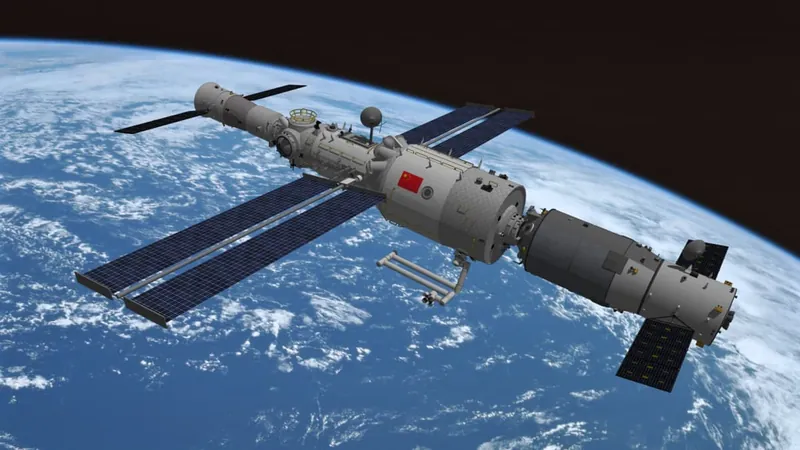
Revolutionary Breakthrough: China Turns CO2 into Oxygen on Space Station!
2025-01-20
Author: Benjamin
Introduction
In an exciting advancement for space exploration, scientists aboard China's Tiangong space station have achieved a remarkable feat: converting carbon dioxide (CO2) and water into vital life-supporting materials. This innovative process, known as artificial photosynthesis, mimics the natural function of plants, transforming sunlight, CO2, and water into oxygen and organic compounds essential for sustaining life.
The Technology Behind the Breakthrough
The primary goal of this cutting-edge technology is to support astronauts on extended missions to distant destinations, including the Moon and Mars. By creating a sustainable ecosystem in space, this technology drastically reduces the dependence on Earth for resupply missions, which are often costly and complex.
Key Innovations
The breakthrough occurred on January 18, in one of the specialized ‘space drawers’ located in the aerospace basic test cabinet of the Mengtian module on the space station. Key to this technological marvel is a semiconductor catalyst that not only captures sunlight but also facilitates the breakdown of CO2 and water into usable resources. This method captures the CO2 exhaled by astronauts, transforming it into breathable oxygen, thereby enhancing the air quality in confined environments.
Broader Implications
Moreover, the versatility of this system allows for the production of other essential materials from CO2, such as methane—an essential fuel source—and formic acid, which can be utilized in synthesizing sugars for food, thereby further supporting long-term human presence in space.
In-Situ Resource Utilization (ISRU)
This experiment exemplifies the concept of In-Situ Resource Utilization (ISRU), as it operates effectively under normal temperature and pressure, unlike traditional high-temperature CO2 reduction techniques that are typically used on Earth. The broader implications of this technology are significant; it holds the key to addressing an urgent challenge on our planet—sustainable CO2 capture and conversion, which is critical in numerous industries striving to reduce carbon footprints.
China's Ambitions in Space Exploration
The successful trial aligns with China’s ambitious vision to become a global leader in space science by 2050. Notably, Ding Chibiao, vice president of the Chinese Academy of Sciences, emphasized the need for continued advancements: 'We have made breakthroughs, yet we still have much to achieve compared to developed nations.'
Future Prospects
China's aspirations extend beyond this achievement. The country plans to establish a robust research station on the Moon, send astronauts to lunar soil, and even collect samples from the atmosphere of Venus by mid-century.
Global Interest in ISRU Technologies
Not staying behind, space agencies worldwide, including NASA, are also investigating ISRU technologies. NASA’s MOXIE experiment on Mars serves as a prime example, testing the feasibility of converting Martian CO2 into oxygen—an essential component for the future of manned space missions.
Conclusion
This municipal triumph not only demonstrates China's increasing capabilities in space science but also highlights a hopeful future for sustainable human exploration beyond our planet! Are we on the cusp of a new era in space travel? Only time will tell!









 Brasil (PT)
Brasil (PT)
 Canada (EN)
Canada (EN)
 Chile (ES)
Chile (ES)
 Česko (CS)
Česko (CS)
 대한민국 (KO)
대한민국 (KO)
 España (ES)
España (ES)
 France (FR)
France (FR)
 Hong Kong (EN)
Hong Kong (EN)
 Italia (IT)
Italia (IT)
 日本 (JA)
日本 (JA)
 Magyarország (HU)
Magyarország (HU)
 Norge (NO)
Norge (NO)
 Polska (PL)
Polska (PL)
 Schweiz (DE)
Schweiz (DE)
 Singapore (EN)
Singapore (EN)
 Sverige (SV)
Sverige (SV)
 Suomi (FI)
Suomi (FI)
 Türkiye (TR)
Türkiye (TR)
 الإمارات العربية المتحدة (AR)
الإمارات العربية المتحدة (AR)